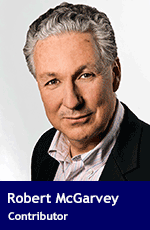 Financial markets were in a tizzy last week. The Dow Jones industrial average wobbled, falling over 1,500 points in near-panic selling over several days. And then, as if on cue, stock markets all over the world were soon ‘correcting’ with the Dow.
Financial markets were in a tizzy last week. The Dow Jones industrial average wobbled, falling over 1,500 points in near-panic selling over several days. And then, as if on cue, stock markets all over the world were soon ‘correcting’ with the Dow.
What caused markets to fall?
According to the experts, there were several root causes.
First, there’s the simple fact that markets have experienced almost a decade of uninterrupted growth. According to a perverse insiders’ logic, a market correction on this scale was overdue, psychologically.
There’s also a school of thought that blames algorithmic trading. Many asset managers use similar computerized systems to analyze the market and if the statistically-generated outcomes are unfavourable, they can (collectively) trigger across-the-board selling.
Thirdly, although the first month of 2018 has been less than terrific, “growth is still above trend,” according to World Trade Organization (WTO) economist Coleman Nee. “The strongest component of the (global growth) index was container port throughput at 104.3, its highest score since the WTO began publishing the indicator.”
Ironically, that’s not good news. Robust global growth coupled with U.S. President Donald Trump’s $1.5 trillion in tax cuts and low unemployment rates all point to upward pressure on wages and prices. And it’s these rising prices that are the problem. In the minds of economists at the U.S. Federal Reserve, they could give rise to another nasty bout of inflation.
There are rumours that the Federal Reserve will have to raise interest rates three times this year, dampening growth in the economy.
But are central bankers fighting the right war? Aren’t rising wages just the thing we need to help embattled workers and stimulate consumer spending?
That may well be, but Federal Reserve chairmen, like old military generals, tend to re-use the tactics that made them successful in the past. The last time the U.S. experienced a significant inflationary period was during the late 1970s, when the consumer price index (CPI) rose at an annualized rate of roughly eight per cent.
Hard monetary medicine was imposed in the ’80s, driving interest rates to unprecedented levels (peaking at just over 20 per cent), causing great harm to businesses and families.
Central bankers around the world are supposed to have a dual mandate: to control inflation and maintain full employment.
It seems that neither of these mandates is being addressed.
Regrettably, the definition of inflation has changed profoundly. It has migrated from its historical meaning: a debasement (devaluation through expansion) of the currency, stimulating a general rise in prices (i.e. a greater supply of money chasing a fixed number of goods), to any general rise in prices (defined by the CPI), full stop.
Central bankers aren’t addressing the money supply per se, but are simply reacting to rising consumer prices, which are subject to a variety of conflicting global forces.
What are the consequences?
A monetary form of class war. Having blamed union power and cost of living adjustments for driving up prices in the 1970s, central bankers have abandoned their mandate to achieve full employment and have become obsessed with holding the line on wages.
Central bank thinking today is strongly informed by a linkage concept referred to as NAIRU, or non-accelerating inflation rate of unemployment.
In this model, wage inflation will remain steady if the unemployment rate is equal to a critical equilibrium in the labour market – the NAIRU point. It’s felt that at the NAIRU point, there’s a balance between the supply and demand for workers.
Importantly, if the unemployment rate falls below the NAIRU, it’s believed that there will be “excess demand” for workers. As a result, wages could start to rise. A faster pace of wage increases, in turn, will push up inflation.
So, based on this perverse logic, the Federal Reserve seems determined to employ interest rate increases, which will increase the rate of unemployment in order to fight an inflationary battle that doesn’t yet exist.
In doing so, central bankers will be imposing an unwarranted assault on economic growth simply to influence market forces when they seem to be trending in favour of wage earners.
Isn’t it time we reminded central bankers of their original mandate and ask them to quit blaming workers for price inflation.
A rising interest rate policy is not only a blunt instrument, it’s a wrong-headed policy option that damages the middle class and unnecessarily undermines the economic health of the nation.
Robert McGarvey is an economic historian and former managing director of Merlin Consulting, a London, U.K.-based consulting firm. Robert’s most recent book is Futuromics: A Guide to Thriving in Capitalism’s Third Wave.
Robert is a Troy Media Thought Leader. Why aren’t you?
For interview requests, click here. You must be a Troy Media Marketplace media subscriber to access our Sourcebook.
The views, opinions and positions expressed by columnists and contributors are the author’s alone. They do not inherently or expressly reflect the views, opinions and/or positions of our publication.

